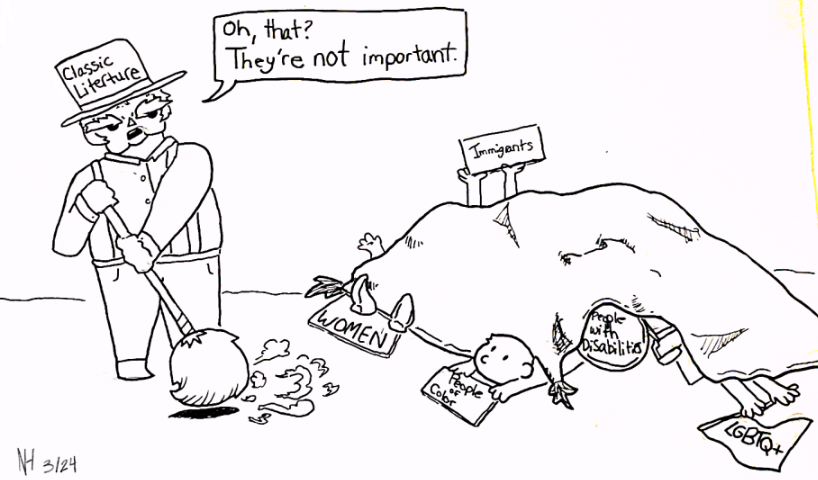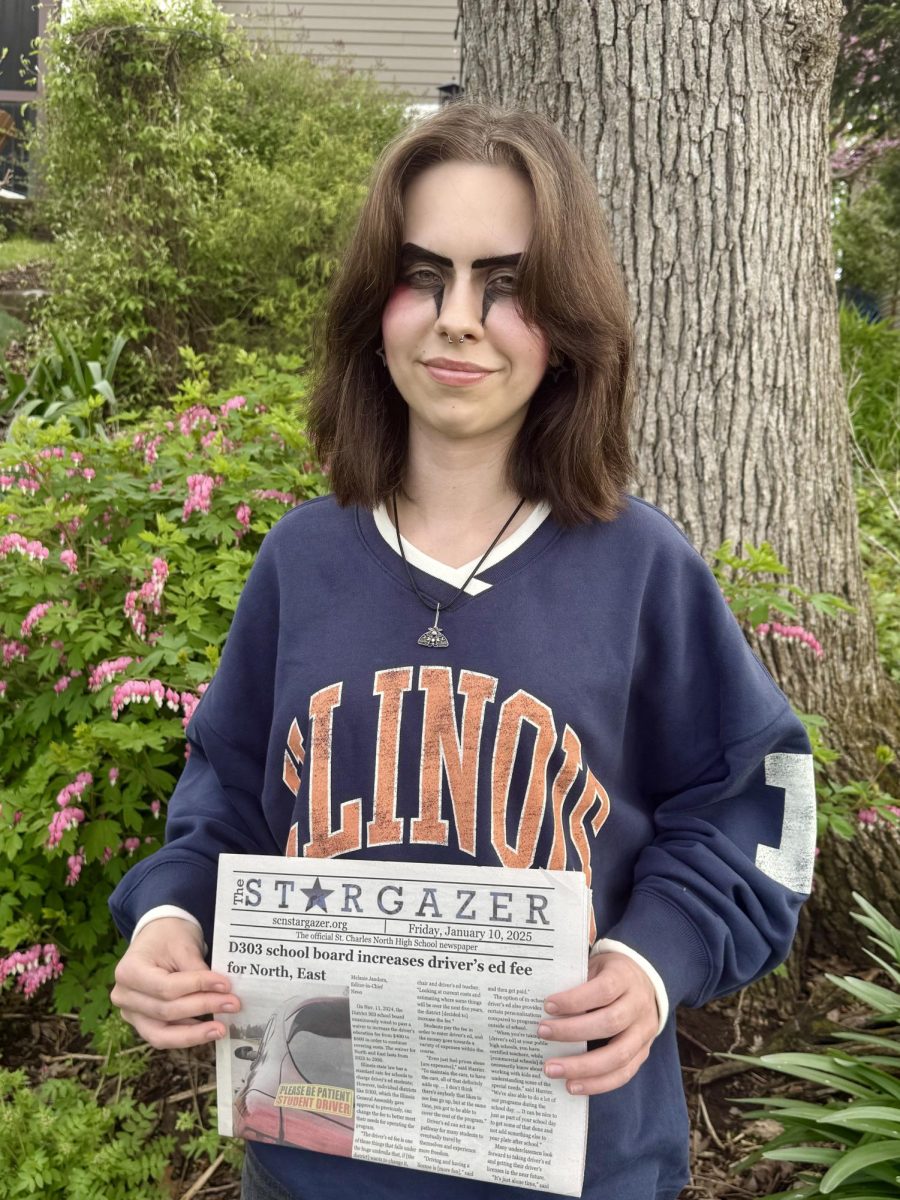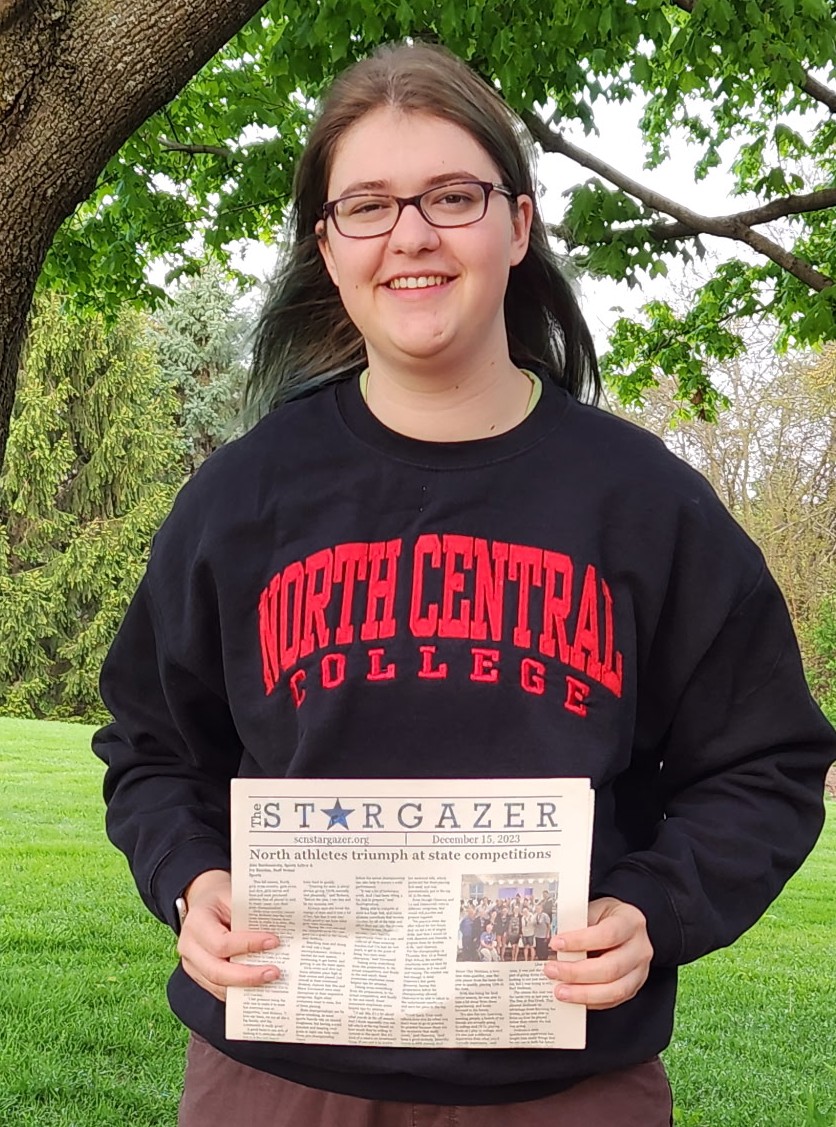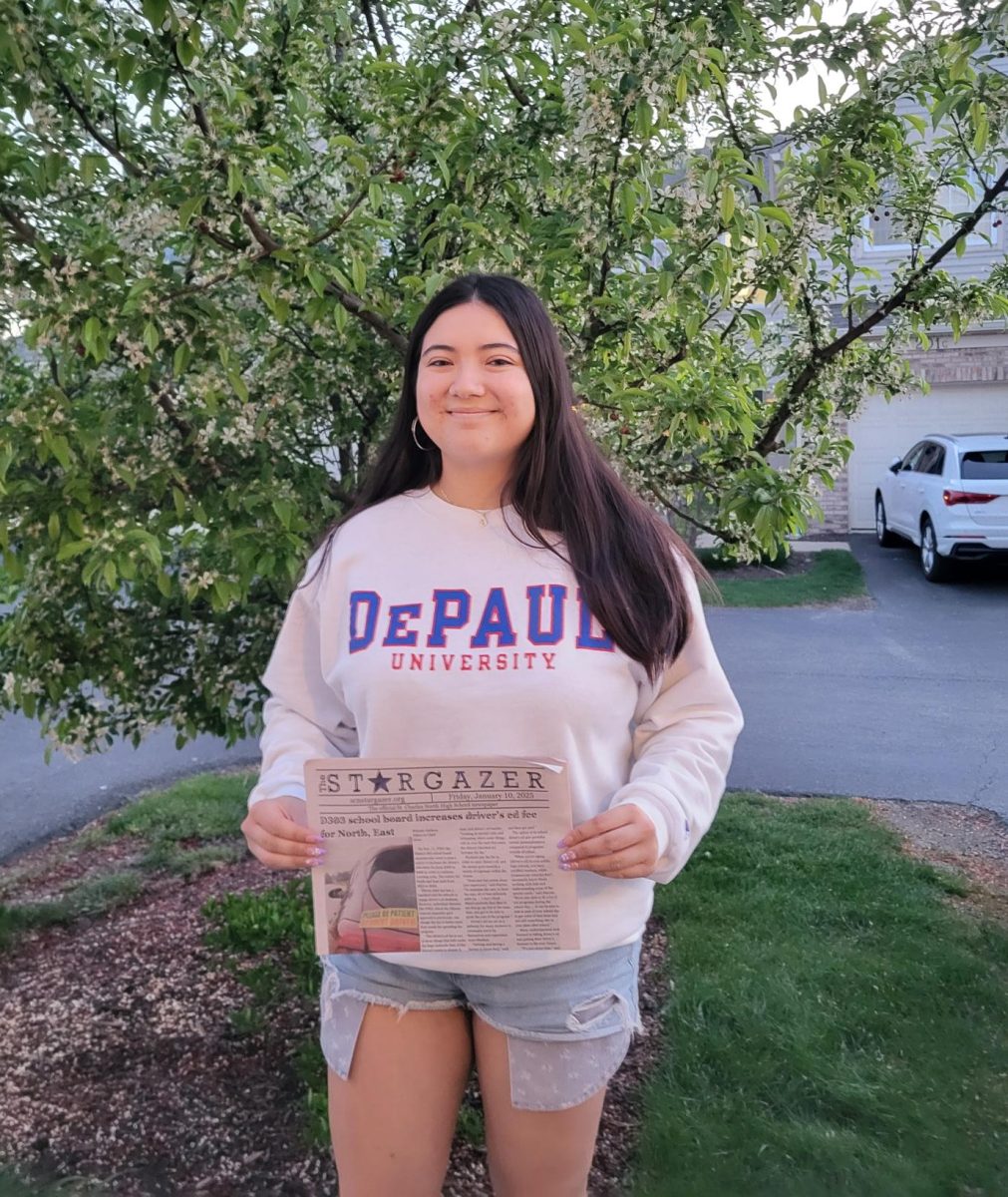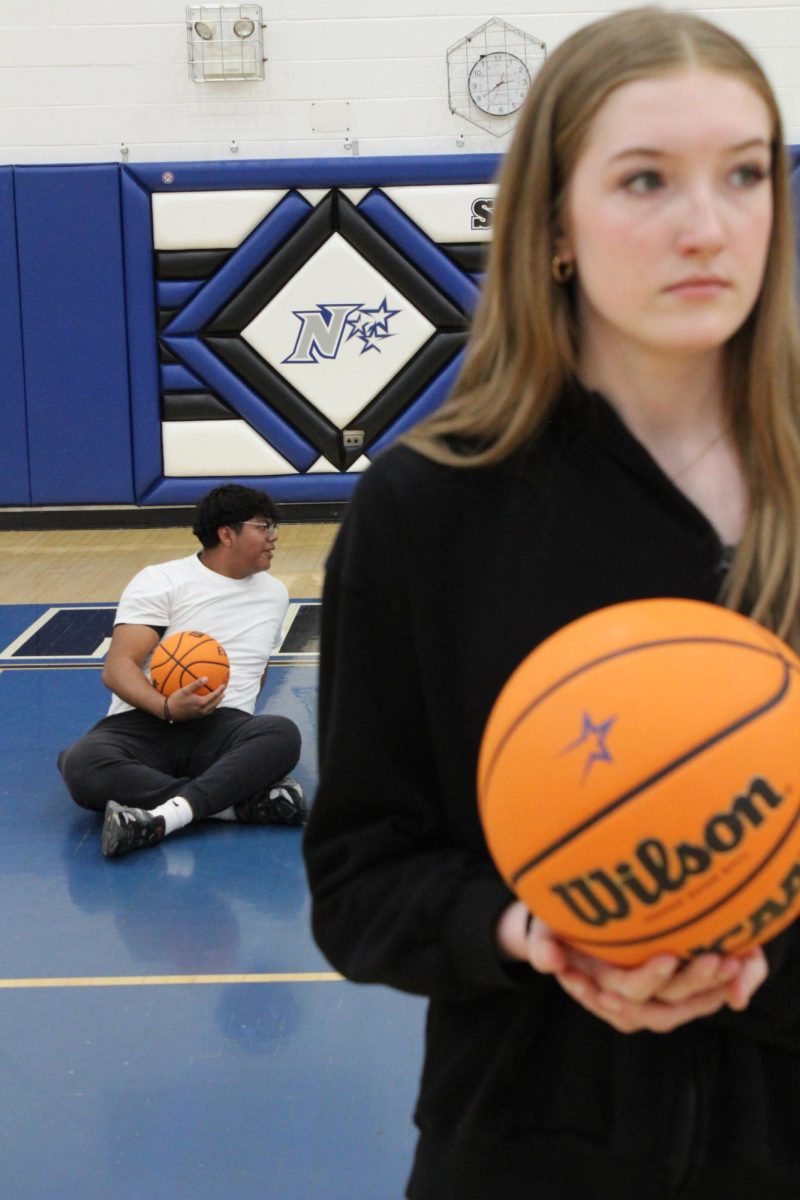Most students have to read some form of canon literature in their time at North. Whether it’s “Of Mice and Men,” “The Odyssey,” “Their Eyes Were Watching God,” “The Great Gatsby” or the countless other stories they are required to read, many students find themselves questioning why they are learning about it. Why are there so many modern English curriculums based on texts that are so old? How are we going to apply this to our own lives? How is this relevant?
According to English 10 teacher Dr. Katherine McCleary, more modern literature would be beneficial for our curriculum.
“I personally feel that we need more modern authors. We need more representation, people of color, LGBTQ+, and different voices that are not typically heard,” said McCleary.
When we read canon literature, classical standards are also spoken to the reader. For example in “Of Mice and Men,” the character Curley’s wife never gets a name. As one of the only women in the book, she is simply used as a plot device and a temptress. What message does that send to the reader? Are women only temptresses who don’t even deserve a real name? Another example would be The Odyssey. The text is around 3,000 years old. Women in the poem are either obsessed and in love with Odysseus, evil witches, or damsels in distress. Again, this sends a message that women are simply objects, which is not true.
Many students in newer generations are also entering these curriculums, and finding it hard to resonate with the characters. Perhaps there is a member of the LGBTQ+ community who is struggling with their identity and has a hard time talking about it to anyone. Literature can be an escape, but when you are constantly being fed texts with exclusivity or degradation of the community, it can be incredibly damaging to the reader. The same concept can be applied to race. There are very few, if any, mixed-race characters in canon literature. It is very traditional, but our generation is not. Modern literature has just started to change that, giving us main characters from diverse backgrounds, written by diverse authors. These books matter because they give students a chance to find themselves and understand they are not alone, they are not different, and they are normal. Not only within the characters, but within the authors.
People in favor of teaching canon literature claim that they wouldn’t be teaching classical literature if it was not good. Jacob Burlingame, English teacher, believes classic’s offer perspective.
“Classics are important because they build perspective for kids,” said Burlingame. “If a kid today sat down and read a book about being a teenager from 30 years ago, what is true about being a teenager then can still be true about being a teenager now. What isn’t still true provides perspective for them.”
The point Burlingame makes is also true. Classics are not horrible and should not be thrown out completely. After all, there is a reason they are considered classics. The stories they tell and the themes they hold can still be applied to the world today in some ways. Although not everyone’s voice is shown in these books, the voice that is perpetuated can apply to many students.
Classical literature is still necessary, but the integration of modern literature, or perhaps different classics should be incorporated into the curriculum. One example of this is the sophomore curriculum. Until a few years ago, the curriculum started with “MacBeth,” an intense and dark Shakespearean tragedy, then jumped to Zora Neale Hurston’s “Their Eyes Were Watching God”. A novel focusing on the struggle African-American Janie faces throughout her life with love and abuse. These are two stories that cover deep issues with society and are overall depressing. Through a lengthy process, the teachers were able to petition to add Trevor Noah’s memoir “Born a Crime” to the curriculum. This narrative focuses on a young man who is mixed-race and his journey throughout his life in apartheid South Africa. Having this representation is crucial, and adding this memoir did not take away from any of the themes students are still meant to learn. It simply enriched their education and broadened the spectrum of ideals they are learning.
As a sophomore, the curriculum covering both “Born a Crime” and “Their Eyes Were Watching God” is a great example of inclusion of canon and modern literature. Both books cover racism, sexism, freedom, and choice, and offer various perspectives. To understand what it is like to live through the lens of Janie and Trevor Noah is important. Students still get the chance to learn from older pieces of literature as well as being able to compare and contrast to modern memoirs. Before when students would learn “MacBeth,” the students would not get both commentaries on racism. Instead they would learn about masculinity and corruption, creating a disconnect between their learning in first and second semester.
Senior students have more choices for their English classes. This includes Honors World Mythology and AP Literature. These classes have different focal points and are able to work with different eras of literature. In Honors World Myth students read classical Greek and Roman literature as well as Fantasy and Sci-Fi in the class. The diversity is beautiful. If curriculums for classes like these are able to include these different works, why are other English curriculums unable to?
Literature is an amazing creation that enhances our learning. The integration of modern literature into English curriculums is necessary. Whether that is simply adding more modern literature or taking away a classic, it needs to happen. Canon literature is needed to an extent, but is not the most crucial part of students’ learning.


